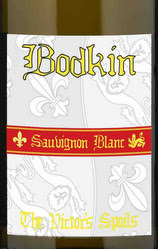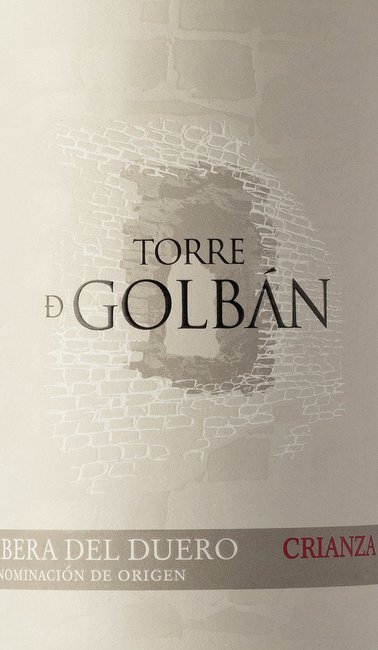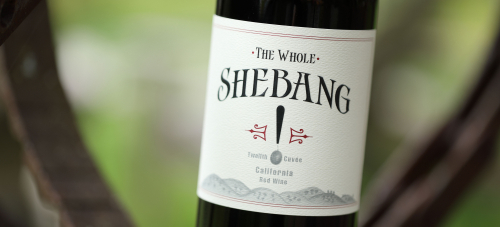A bottle of each:
Santiago Ruiz O Rosal (Sustainable)
Kathryn Kennedy Small Lots Cabernet (Sustainable)
BOHIGAS XAREL·LO (ORGANIC)
BODKIN SAUVIGNON BLANC THE VICTOR’S SPOILS (ORGANIC)
JAVIER ROUSSEAU PAIS ROSÉ (ORGANIC AND NATURAL)
des Gryphées Beaujolais cuvée des balmes (practicing organic)
Atalyas de Golban Ribera del Duero (Organic)
Shebang! (Sustainable)
Travis Tausend Agori White (Organic, Natural)
Mas de Gourgonnier Rosé (Organic)
Mas de Gourgonnier Rouge (Organic)
Pierres Sèches Syrah (Organic)
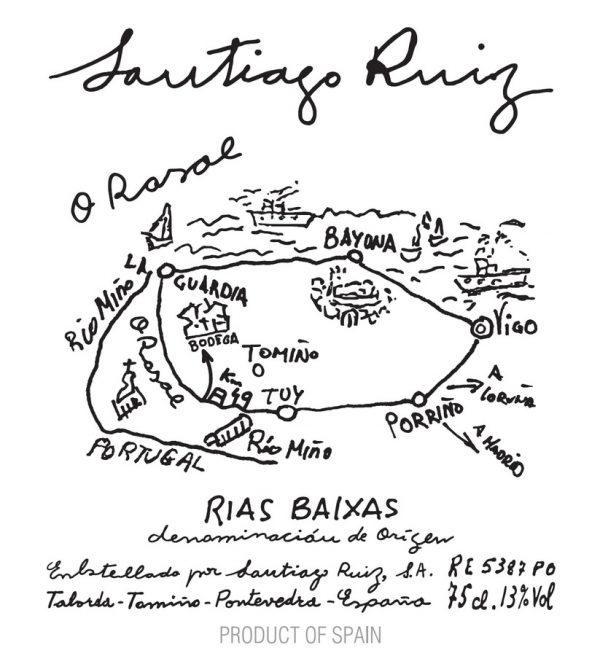
Santiago Ruiz White Blend O Rosal (Sustainable)
Most talk of Albariño wine inevitably leads back to talk of Bodega Santiago Ruiz and its founder, Mr. Santiago Ruiz, a man hailed as the “inventor” of Albariño wine. Located in the district of O Rosal, the bodega is one of the leading producers in Rias Baixas. Santiago Ruiz was a visionary, decades ahead of his time. In 1978 at the age of 70, retired from his everyday work obligations, he decided to devote his newfound free time to his real passion by following the tradition of his ancestors (His maternal grandfather was one of the first winemakers in Galicia, founding his own bodega in 1860).
A stout defender of the quality of native grapes, Santiago Ruiz became an ambassador for Rias Baixas’ wines, traveling the length and breadth of Spain (mostly on foot), with the clear objective of heightening awareness of Rias Baixas among the most select restaurateurs and opinion leaders of the early 1980’s. He was convinced that Albariño could give rise to some of the best white wines in the world, and his trailblazing work has clearly made a mark in the wine world, with Rias Baixas Albariño now considered a “must have” on any thorough wine list or cellar.
A blend of mostly Albariño, with Loureiro, Godello, Treixadura, and Caino Blanco mixed in for acidity and texture, this wine is refreshing, brisk, crisp, complex and a lot of fun to drink. Intense and complex aromas of blossom, pear, apple, and citrus fruit characters, anise seed and some subtle spicy notes. Concentrated flavors on the palate are carefully balanced by clean acidity and stony minerality. Packed with flavor, it has a long and crisp finish.

Kathryn Kennedy Small Lot Cabernet Sauvignon – sustainable
Kathryn Kennedy Winery leases and farms small parcels of Cabernet dotted across the Sana Cruz Mountain range, some as tiny as a few rows in a backyard. The wine is blended from these tiny parcels to create the final project–a masterful Cabernet painting a great overview of the Santa Cruz Mountains AVA.
Kathryn Kennedy was an original and a pioneer in every way, establishing one of the first estates in Santa Cruz that specialized exclusively in Cabernet Sauvignon. Inspiration to plant a vineyard came from a fine bottle of Martin Ray Cabernet from the 1950s and from observing men tend an old Cabernet vineyard across the road from her home.
Kathryn was a pioneering female in the CA wine industry. Her brand was one of the first to bear a woman’s name. Her location was unusual too: although Saratoga had a stellar wine history in the 1880s, by the 1970s it was far from Napa and off the map to all but the most astute. After selling fruit for two vintages to Mount Eden Vineyards, Kathryn established her brand and winery in 1979.
Marty Mathis is considered one of the top winemakers in the Santa Cruz Mountains region, he is best known for Cabernet Sauvignon wines capable of achieving world-class quality with age. Marty’s knowledge of the Santa Cruz Mountains allowed him to access grapes from superior small vineyards.
Winemaker notes: Brilliant garnet red in color, this wine offers aromas of creamy oak, black raspberry, cherry, and dry loamy earth with an alluring hint of herbs and chocolate/mint candy. A plush and gentle entry leads to a full, rich mouthfeel with great persistence and mild, well-developed tannins. The signature long delineated finish of the Santa Cruz Mountains shows a style reminiscent of great Italian reds.
Jancis Robinson: Smells of sweet black cherry and cassis. Quite juicy and fresh, with black cherry and Bing cherry fruit touched by a hint of blueberry and cassis. Excellent acidity and a note of green herbs add to the overall impression of freshness. Faint muscular tannins gain strength through the finish.
BOHIGAS XAREL·LO (ORGANIC)
Xarel·lo is a white grape variety of Spanish origin specially grown in Catalonia. With Macabeu and Parellada, is one of the three traditional varieties used to make the sparkling wine Cava. It also makes a bracingly refreshing table wine, as evidenced in this staff and store favorite.
Aged completely in stainless steel, Bohigas Xarel·lo is a light to medium-bodied wine, with crisp, fresh acidity and hints of citrus oil and green apple skins on the nose.
Made using organically farmed grapes, grown at high elevations, the juice macerates for a few hours in contact with the skins prior to being fermented in stainless steel vats. The wine sees no aging in tank before bottling, resulting in a fresh and clean wine with bright flavors.
Since the 13th century, the same family has been farming the land around Fermi Bohigas in the northern Penedes region of Catalunya at the foot of the majestic Monserrat range, about an hour northwest of Barcelona outside the town of Odena in the Anoia river valley. Jordi (father) and Maria (daughter) Casanovas are the 35th and 36th generation living on the property since the time of the Moorish occupation when the neighboring hillside served as the final outpost for the Catalans. The 650 acre estate is split between two properties, “Can Maciá” and “Can Batllevell”. Olive trees, wild garrigue and 260 acres of grapes are grown on the two properties and the Bohigas wines come exclusively from the Can Maciá section.
The farming here is organic, and the northern and higher altitude location make for a perfect micro-climate than tends to be cooler than the rest of the region. The old farm house adjoins a century old winery which sits atop cave cellars that are still actively used for the production of sparkling Cava, which the family has been producing from only their own vineyards since 1929. The vinifications are done in modern, stainless steel vats with perfect control of temperature and cleanliness while the cellars are still used for hand riddling of the Cava bottles.
The commitment to quality viticulture extends into the cellar where they produce balanced, mineral-driven wines that can only come from the Jura. The wines always exhibit a focused purity and intensity of flavor which maintain the cool climate typicity of this mountainous region.
Bodkin Sauvignon Blanc The Victor’s Spoils (Organic)
Bodkin Wines was founded by Chris Christensen, an Iowa native, in 2011. His passion for aromatic wines and winemaking led him to create America’s first Sauvignon Blanc with bubbles. In 2013, Andrew Chambers, an Oregon native, joined the brand and they purchased 24 tons and made 1,100 cases of their award-winning Sparkling Sauvignon Blanc. Since that time, Bodkin Wines has produced over 15 varietals of wine, eleven of which were scored at 90 points or higher by Wine Enthusiast. They are consistently growing, year after year, but are determined to keep their presence small and unique. Bodkin Wines is still 100% owned by both Chris and Andrew, two guys living and working hard in Sonoma County.
Winemaker Chris Christensen was named “Winemaker to Watch” by the SF Chronicle in 2017, and has been lauded nationally for his work with Sauvignon Blanc. (We’ll be bringing in several of his sparkling SBs soon). He’s one of the few African American winemakers working today, and we are very happy to support him and his family by bringing in the wine.
Winery notes: “Light and approachable, this high flavor-low alcohol wine is perfect to drink all day long and on into the party hour. Pineapple-guava with accents of tangerines and nectarines dominate the flavors and aromas. This wine pairs well with live music, sunny days, fresh cuisine, cool dudes and hot babes-so it pairs with pretty much the best things in life. The winemaker calls that winning and to the victor go the spoils. Grip and Sip!”
90 points, Wine Enthusiast: This is a delightfully bright, light and refreshing wine, grassy and herbal within a context of textured grapefruit and lime. It’s lovely and complex with great persistence of acidity.
Pair with lighter foods, like fish, salads, or appetizers; or try as a refreshing aperitivo. The mouth-watering acidity of this wine makes it a perfect foil for fattier dishes, so have fun!

Javier Rousseau Pais Rosé (Organic and Natural)
For over 250 years, the Rousseau family has been farming this same estate, home to 150+ year old vineyards. With a true love of the land and an irrepressible desire to tell its story, Javier Rousseau (who trained professionally as a chef before turning his focus to winemaking) produces wines that absolutely sing. Bursting with old-vine character, vibrancy, and fresh acidity, they are the natural companions to a good meal.
Pais, or Mission Variety, came to the Americas as raisins onboard Spanish ships in the 16oo’s. Arriving in the port of Concepción, vineyards were planted from the raisin seeds, initially at least, to make wine for Catholic Mass. Phylloxera never came to Chile, and many of the roots of these age-old vineyards have survived since colonial times. Today they make a lighter, fresher kind of red with a good dash of history.
This bottling is comprised of juice from dry-farmed, 100-year-old plus head-trained bush vines (pie franco) planted in clay-loam soils at 400 feet above sea level. Hand-harvested, native yeast spontaneous fermentation, aged in very old casks for six months before bottling and release. Nearly magenta in color and laced with that tart cranberry and watermelon character that País shows in spades, it’s invigorating.

des Gryphées Beaujolais, Cuvée des Balmes (ORGANIC)
You can’t ignore the “gryphées,” or seashell fossils, that crunch underfoot as you walk through Pierre Durdilly’s vineyards in Moulin-à-Vent, as if the ocean were just over the next gentle hill. It’s this unique terroir, with its mineral complexity, that sets the family’s wines apart from other more rustic bottles from the region. How this terroir is expressed in their supple, complex Moulin-à-Vent is exactly what inspired us the first time we tasted at this modest family cellar. While our history with the Durdilly family goes back at least two decades, today we welcome the family’s third winemaking generation, looking to take the estate in new, exciting directions. Guillaume, Pierre Durdilly’s son, is a keen talent and an eager learner. He’s also inspired his father to expand the domaine, acquiring vineyards in other Beaujolais cru villages in an attempt to help preserve the region’s many outstanding older-vine vineyards (many of which have been abandoned by winemakers retiring or sadly, giving up the craft entirely). With families like the Durdillys looking to preserve the “patrimoine” of Beaujolais, the region’s history and traditions are secure!
The father-son team of Pierre and Guillaume Durdilly tend their older vines, adhering to organic treatments whenever possible. Vineyards in general are found on very steep, granite-rich hillsides, the classic terroir of Beaujolais. The family likes to plant beneficial herbs between vineyard rows, to both prevent erosion and combat pests. Grapes are harvested by hand and fermented (usually with semi-carbonic maceration, a traditional practice in Beaujolais) in either cement or stainless steel tanks. Wines are often aged in either large, older foudre or tank, depending on the cru, and bottled unfined and unfiltered.
In local patois, a “balmes” is a slope. This steeply graded vineyard was planted nearly 100 years ago, its ancient vines producing a handful of bunches each vintage. But what a treasure in Beaujolais! Excellent terroir (a mix of limestone, clay and the classic “pierres dorees,” the mineral-rich, golden chalk that characterizes much of Beaujolais) plus very old vines places this anything-but-simple Beaujolais Rouge in cru territory. Simply a treasure in great Gamay!
Atalyas de Golban Ribera del Duero (Organic)
Atalayas de Golbán has young vineyards with 30 years of age as well as old vineyards that can reach up to 100 years of age, and the aim is to combine concentration and strength without sacrificing liveliness. The intention of this wine is to express the virtues of the Tinto Fino variety, which are elegance, finesse and a long ageing period. The Tinto Fino is a classic clone of the Tempranillo variety grown in Ribera del Duero. This is a great red wine aged following the times of a Ribera del Duero. It is a delicious wine.
This is a great wine from Ribera del Duero, complete and ripe. Intense, elegant and lively. Red and black cherry in color, with a fresh nose reminiscent of stone fruit. As it develops, balsamic tones with hints of liquorice appear. In mouth it is impressive and balanced, with a long and tasty step of mouth, appearing again the fruit already more mature. The wood brings seriousness and complexity. For the good harmony of its components, makes us foresee a perfect maturation in the coming years.
94 points, Wines and Spirits The team at Dominio de Atauta developed this project based at a separate facility in town, working with fruit from local growers in Soria. Half of their crianza comes from these high-elevation sites, planted in sandy soils at altitudes up to 3,200 feet where the vines are 70 to 80 years old. The other half is from vineyards in Burgos, mostly La Horra and Roa, where 30-year-old vines grow in clay. Winemaker Jaime Suárez says the only difference between this wine and La Celestina Crianza (also recommended in the June issue) is that the better grape selection goes to La Celestina. And yet, this wine blew me away. A week later, in the company of the top wines of our Ribera del Duero tastings, it was still holding its own—not complex, like what turned out to be several Vega-Sicilia wines, but fresh and delicious. I can’t say I wasn’t bemused (confused… embarrassed…) to find out this is a $19 wine. Its time in French oak barrels (20 percent new) points up the luxurious texture, a silken richness to frame the layers of red and black-skinned fruit—the acidity of fresh currants and the warm sunshine of blackberries. It’s a savory tempranillo, all of a piece, and that integration sustains it…if you don’t immediately finish the bottle with a dinner of roast lamb. Astonishing.
Shebang! (Sustainable)
Sherman and Hooker Shebang is made by Bedrock Wine Company and is a wine crafted from a blend of declassified Syrah, Petite Syrah, and Zinfandel from Bedrock Wine Co., along with selected bulk lots from other small producers. Shebang is a project by Morgan Twain-Peterson, the son of Ravenswood founder Joel Peterson. Morgan grew up in the world of wine in California. In addition to this project, Morgan also produces tiny amounts of old vine, heirloom red and white blends, Pinot Noir, and Syrah under the Bedrock Wine Co. label. Also noteworthy: Morgan passed the prestigious Master of Wine and has become one of the less than thirty American Masters of Wine!
Sherman & Hooker is named after the two Civil War generals who founded Bedrock Vineyard in 1854. It is a blend of declassified Syrah, Petite Syrah, Zinfandel and friends from Bedrock Wine Co., along with selected bulk lots from other small producers. All of the lots, whether from Morgan or from friends, were aged in French oak, and saw no chips, staves, or other gobbledy-gook. Morgan chose to make the wine a multi-vintage, multi-varietal blend in order to maintain quality at a terrific price point. This wine provides delicious drinkability and is sure to be a JUGernaut of a wine!…
Mostly Zinfandel blended with Carignane, Petite Sirah, Mourvedre, Alicante Bouchet, Grenache, Syrah, Barbera and a touch of whites for aromatics. Sourced from several old vine vineyards throughout Sonoma County.
Fermented using native yeasts in stainless steel, and aged in a combination of stainless steel (85%) and French oak (15%)
The informing impulse behind Shebang is to create a wine that is long on deliciousness and low on pretense. We do this by vinifying the wines with the same care and love as the higher end Bedrock wines- picking at respectable sugar levels (not too high!), using only native yeast fermentations, and a trace of good French oak to round things out
It’s a wine that is meant to be the perfect complement to pizza, pasta, burgers, or whatever is on the table. It’s real wine that’s not manufactured or manipulated. The result is a serious bottle of wine with integrity that drinks WAY beyond its price point!
“Morgan Twain-Peterson is one of the most impressive young winemakers I have ever met, and it’s not just because he grew up the son of a famous producer. Making wines at this level requires talent, passion, hard work, and a great palate, none of which is easily inherited. Along with Mike Officer of Carlisle, Twain-Peterson is on a mission to rediscover what he calls California’s old-vine “heritage” vineyards. These historic sites planted by California’s early immigrants, often home to unknown field blends, remain some of the most fascinating vineyards in California. Officer and Twain-Peterson were tired of seeing these old sites gobbled up by industrial-scale wineries, so they decided to do something about it. Bravo.” Antonio Galloni

Travis Tausend Agori White (Organic, Natural)
This field blend of Semillon, Sauvignon Blanc, Chardonnay and Riesling is fermented with the fruit harvested early, which reduces sweetness and makes it light, the wine is just that: herbaceous, with notes of grapefruit pith and tons of minerality!
From Travis:
With the help of the vineyard owner Steve, the vines grow at the very southern tip of the Adelaide Hills in a small community called Hope Forest. The original careers and traditional owners of this land are the Perimangk people. The soils here are varied but the vines put their roots into mostly clay, sand and ironstone based soils.
The vineyard is planted on several slopes but mostly make use of a north east aspect. Being in a raised valley that is cooled by two winds, the hot days experienced by the regions surrounding are mitigated by the Southern Ocean wind and the Gulf breeze, making our micro climate one of the coolest in the Adelaide Hills. Because of this beautiful flow of air, we get pockets of noble rot in the vineyard that I use to add another layer to the Rieslings and Sauvignon Blanc.
All of the work of the business is done by me. This includes: logistics, maintenance, making, blending, bottling, labelling, packaging, bookkeeping, marketing, design etc. During harvest I am helped by friends and family as it is a bit much to do on my own.
In the vineyard all of the work Is done by vineyard owners and me with management by me for the rows I have selected. During harvest we pay Isa, Arif & Francis + their chosen crew $28 (minimum wage in South Australia is $19.27) per person, per hour to help pick the fruit with me, starting at sunrise with breaks for morning tea and lunch and finishing no later than 2pm. The wages for these picking days are paid at the end of each picking day so that the money flows directly to the pickers as soon as the work is done.
I see winemaking as an art. The wines that I make have emotion, intuition and energy that has flowed through me at the time of making them. For this reason, the wines will always be different, not only due to vintage variations from year to year, but also the changes and growth within me as a winemaker and person. I hope you find as much pleasure in drinking them as I do in the making.
I am interested in the history of the land, the environmental flow, the cultural resonance and the spiritual weight that weave a narrative into the vineyard. With that history comes a responsibility to care for the land allowing future generations to find it in better condition than when we found it.
I keep this in mind when tending to the vines and am intrigued to learn more from the traditional and rightful custodians of this place, the Peramangk people. Immersing ourselves in an intimate history of our place can only help shape a unique understanding of our responsibility as carers for this land. This deep knowledge and knowing of place will help to inform how I tell this story through the medium of wine.
All of the wines I make are done so with very little modern machinery, making use of a hand destemmer, and hand driven press, heaps of buckets, 2 hoses, a stack of old barrels and some tanks. It is important that we labor over the fruit to give attention to detail and respect a process that has a wonderful history of its own.
My history as a winemaker is short in practice (I have been making wine since 2014) but vast in learning and shaping of ideas. I have been immersed in natural wine since 2005. I have been molding my opinion, my palate, perspective and an understanding of what makes me smile when I taste a wine. I bring all of that knowledge to every decision that is made in the growing and making of the wines.
I dearly hope that when the wines are opened they are surrounded by good humor, great conversation and fun. After all, that is what they are there for.
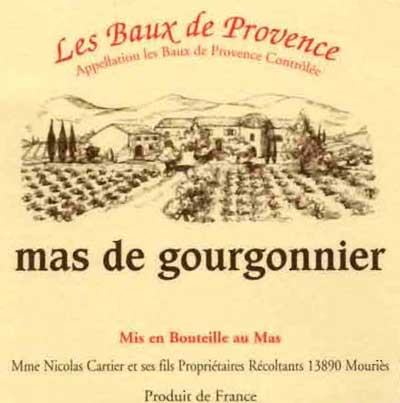
Mas de Gourgonnier Les Baux de Provence Rosé (Organic)
When people talk seriously about “natural” wines, they often talk about the organic wines of Mas de Gourgonnier. In the heart of Provence in the 1970s, this family estate was one of the first officially certified organic wineries, back when such a practice was seen as foolish for vine growers trying to make a living.
Yet Mas de Gourgonnier’s organic roots go back even further. Since the eighteenth century, the Cartier family has worked these fields, providing the local abbey with freshly grown fruits, vegetables and grain. It was in the 1950s when the family planted its first vines.
The rest, as it is said, is history. Here in Mouriès, you’ll find a direct, unadulterated connection between the land and each bottle. The earthy aromas of flowering rosemary, wild sage and juniper and the mountain freshness of the cooling “mistral” winds are all echoed in the estate’s organically raised wines.
In this unassuming, rugged appellation, the integrity and consistency of the family’s philosophy and products mirrored our own as an importer. This is a vine-growing family that doesn’t have to “sell” a natural philosophy; it’s simply who they are, and who they’ve always been. This purity of focus and flavor is still true today. Mas de Gourgonnier is one of the bedrock estates in southern France and certainly one that has few peers.
The vineyards of Mas de Gourgonnier make up a mini-paradise just south of the granite Alpilles Mountains. The estate is certified organic (Ecocert) and has been since 1975; in fact, it was one of the first in the region. Soils are a mix of decomposed granite and limestone, very rocky and dry. Vineyards are surrounded by pine trees and the natural scrub (garrigue) of the south, perfuming the area with rosemary, thyme and lavender. The estate makes its own compost (from cow/sheep manure) and plows between vineyard rows; beneficial herbs are planted to control pests and moderate vine growth.
Grapes are harvested by hand in the early morning hours or late in the evening when temperatures are cooler, and are fermented on indigenous yeasts in temperature-controlled tanks. Very little to no sulfur is added during the fermentation process. Wines are aged in tank for the white and rosé; and in a combination of tank, large oak barrel and older French oak barrels for the reds. All wines are bottled unfined and unfiltered.
Les Baux de Provence Rosé While rosé wine is often mentioned in the same breath as the beauty of Provence, Mas de Gourgonnier’s rosé is a cut above, a textured, spicy wine that echoes the rustic beauty of the estate’s reds while capturing a silky elegance that makes rosé wine so pleasurable to sip in the hot summer months.
A blend of 63% Grenache, 27% Cabernet Sauvignon, and 10% Mourvèdre grown in vineyards that are surrounded by pine trees and the natural scrub (garrigue) of the south. Soils are a mix of decomposed granite and limestone, very rocky and dry. The estate makes its own compost (from cow/sheep manure) and plows between vineyard rows; beneficial herbs are planted to control pests and moderate vine growth.
Hand-harvested. Grapes are destemmed and lightly crushed, then macerated for eight to 12 hours. Juice is removed from the must (rosé de saignée) and fermented on indigenous yeasts in temperature-controlled, stainless steel tanks. Aged in tank. Bottled unfined and unfiltered.
Aromas of wildflowers, orange peel, light spice. Flavors of pomegranate and cherry jam. Silky, medium-bodied.

Mas de Gourgonnier Les Baux de Provence Rouge (Organic)
When people talk seriously about “natural” wines, they often talk about the organic wines of Mas de Gourgonnier. In the heart of Provence in the 1970s, this family estate was one of the first officially certified organic wineries, back when such a practice was seen as foolish for vine growers trying to make a living.
Yet Mas de Gourgonnier’s organic roots go back even further. Since the eighteenth century, the Cartier family has worked these fields, providing the local abbey with freshly grown fruits, vegetables and grain. It was in the 1950s when the family planted its first vines.
The rest, as it is said, is history. Here in Mouriès, you’ll find a direct, unadulterated connection between the land and each bottle. The earthy aromas of flowering rosemary, wild sage and juniper and the mountain freshness of the cooling “mistral” winds are all echoed in the estate’s organically raised wines.
In this unassuming, rugged appellation, the integrity and consistency of the family’s philosophy and products mirrored our own as an importer. This is a vine-growing family that doesn’t have to “sell” a natural philosophy; it’s simply who they are, and who they’ve always been. This purity of focus and flavor is still true today. Mas de Gourgonnier is one of the bedrock estates in southern France and certainly one that has few peers.
The vineyards of Mas de Gourgonnier make up a mini-paradise just south of the granite Alpilles Mountains. The estate is certified organic (Ecocert) and has been since 1975; in fact, it was one of the first in the region. Soils are a mix of decomposed granite and limestone, very rocky and dry. Vineyards are surrounded by pine trees and the natural scrub (garrigue) of the south, perfuming the area with rosemary, thyme and lavender. The estate makes its own compost (from cow/sheep manure) and plows between vineyard rows; beneficial herbs are planted to control pests and moderate vine growth.
Grapes are harvested by hand in the early morning hours or late in the evening when temperatures are cooler, and are fermented on indigenous yeasts in temperature-controlled tanks. Very little to no sulfur is added during the fermentation process. Wines are aged in tank for the white and rosé; and in a combination of tank, large oak barrel and older French oak barrels for the reds. All wines are bottled unfined and unfiltered.
Les Baux de Provence Rouge A richly flavored red (44% Syrah, 26% Grenache, 15% Cabernet Sauvignon, 15% Carignan) with autumnal aromas, plush red/black fruits and peppery spice. Few other Provençal reds can match the power and grace of this bottle (its form a traditional Normandy “Calvados” shape that only Gourgonnier uses). : 20 to 30 years
Hand-harvested. Grapes are destemmed and lightly crushed, and fermented on indigenous yeasts in temperature-controlled, stainless steel tanks. Aged in a combination of tank and older French barrels. Bottled unfined and unfiltered.
Aromas of Provençal garrigue; flavors of spiced cherries, plums, ginger and dark chocolate.
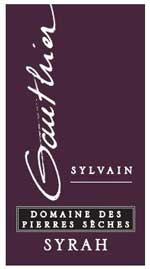
Pierres Sèches Syrah (Organic)
The northern Rhône is today experiencing a vinous reawakening, with a whole new generation of young talent eager to test their skills on the region’s ancient, granite slopes.
Winemaker Sylvain Gauthier of Domaine des Pierres Sèches is one artisan who already has found more than solid footing here in the Saint-Joseph appellation. He started his micro-domaine in 2007, the name “pierres sèches” inspired by the many hand-built stone walls that support vineyard terraces in the region.
Originally from northern France, Sylvain studied winemaking in Beaune. After his studies he secured a post with Michel Chapoutier, then another with Stéphane Robert in Saint-Peray, before deciding that Saint-Joseph was where he would stake a claim on his own.
Sylvain’s native talents are on full display in each and every bottle. These are wines with serious soul, deeply flavored yet effortlessly elegant, a perfect mirror for the rugged beauty of northern Rhône grapes.
Sylvain cares for his 13.5 acres of land according to organic practices, yet the estate is not certified. (Sylvain plans to pursue certification in the near future, however.) Vineyards are plowed either by horse or by hand.
Vineyard holdings include small, steeply graded plots in the communes Sarras, Arras-sur-Rhône, Vion, Ozon and crucially, in the renowned, southeast-facing lieu-dit of ‘Aubert’ on the Sainte Épine mountain in Saint-Jean de Muzols, all located in the southern portion of the Saint-Joseph appellation. The original boundaries and villages of the Saint-Joseph appellation (drawn in 1956) are located here in the south.
Sylvain also maintains Syrah vines in the commune of Sécheras, not far from his cellar in Cheminas, for his Ardèche Rouge.
Soils are mostly decomposed granite, the classic terroir of the northern Rhône valley.
Syrah is partially destemmed and fermented in temperature-controlled, stainless steel tanks on indigenous yeasts. The estate Ardèche Rouge is aged in tank. Wines are filtered but not fined.
Estate vineyards of 30 year old vines are found on a high-altitude plateau in the commune of Sécheras, north of Tournon, facing south/southeast. Soils are mostly decomposed granite.
Grapes are hand-harvested, and mostly destemmed (90%); fermented in temperature-controlled, stainless steel tanks on indigenous yeasts. Aged in tank. Bottled unfined, with minimal added sulfur.
Aromas of red fruit, baking spices, pepper, light licorice. Juicy, tangy and bright; as the French say, “glouglou” (too easy to drink).




